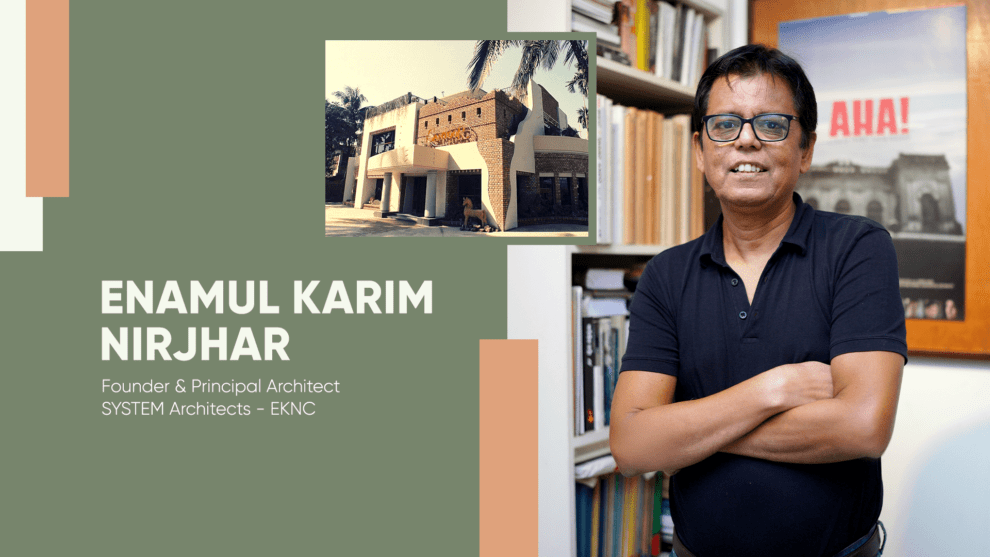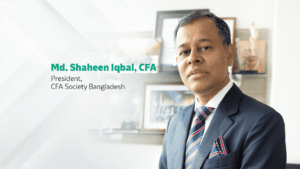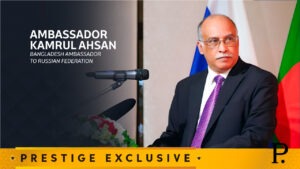Q. Let’s start with a glimpse of your early life and your academic background.
My journey through education and creative pursuits has been marked by a deep-seated curiosity and a desire to make a positive impact on society.
Initially, I wasn’t particularly drawn to traditional schooling. I had an insatiable appetite for knowledge and an abundance of questions that couldn’t be satisfied within the confines of a classroom. This thirst for understanding led me to embark on a path in medical college, but I soon realized it is difficult for me to adjust with their teaching system. Consequently, I thought the field of architecture would give me unconstrained freedom which I am seeking.

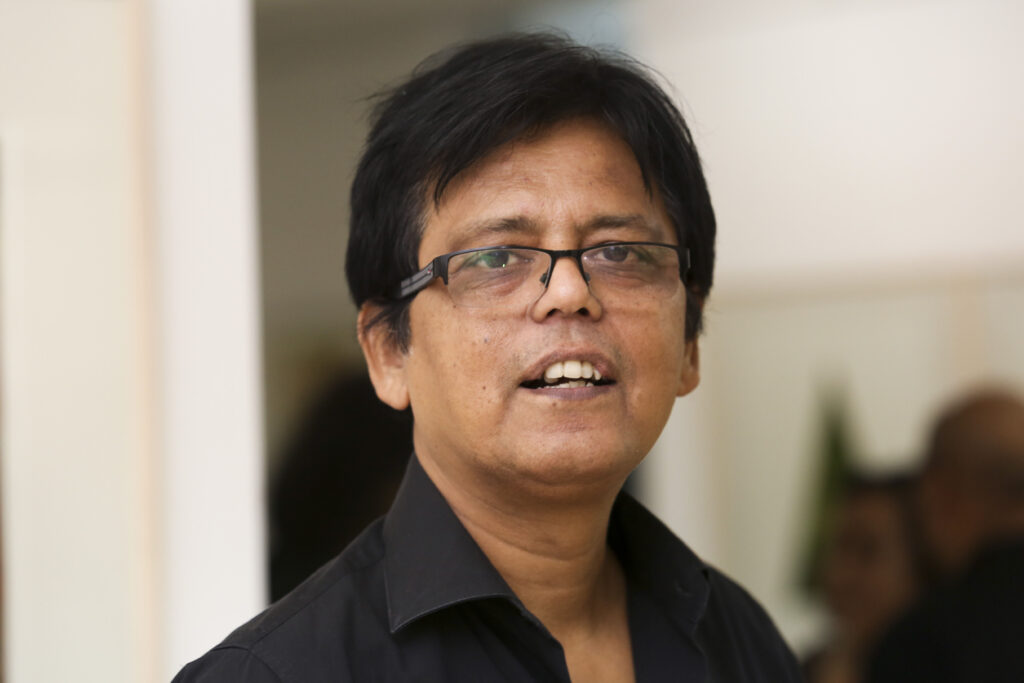

Q. Can you tell us about your journey into the field of architecture and what initially drew you to this profession?
Initially I thought the field of architecture had scope for me to expand and unshackle my mind. Where architecture in our country is mostly correlated to business instead of society, I toiled to find my way here. Throughout my life, I’ve grappled with profound questions about social justice. I’ve questioned why the underprivileged should continue to suffer while the wealthy enjoy every privilege. To create a process aligning these socio-political reasons with creativity, has been a struggle from the beginning and still going on.

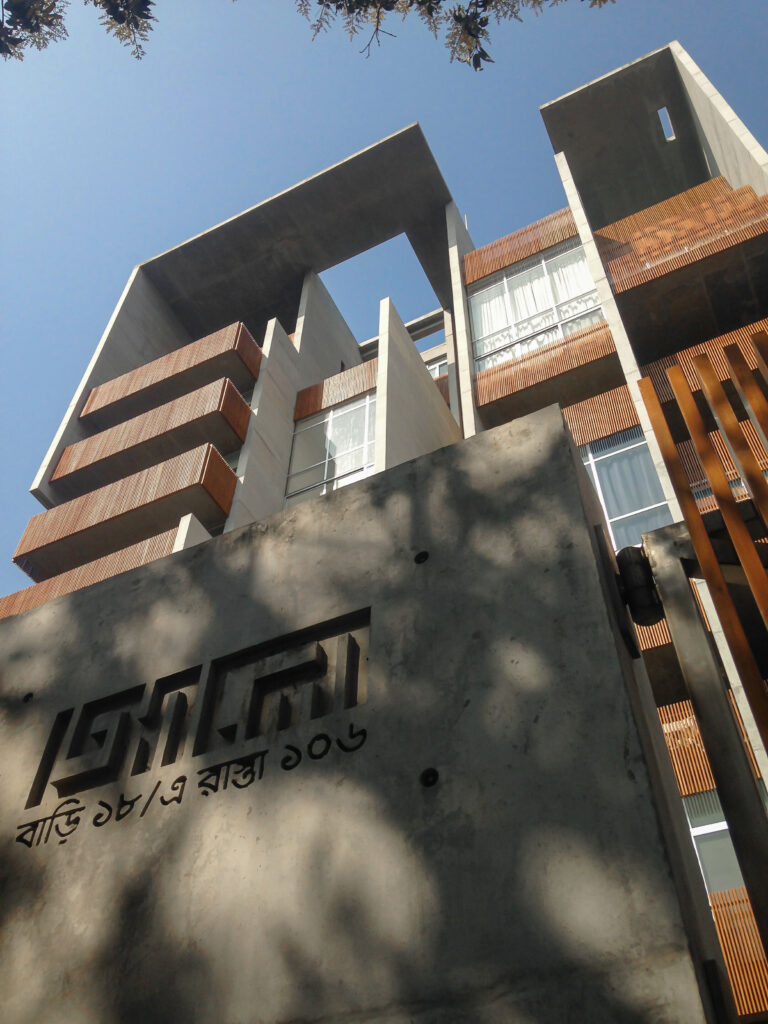

After entering the world of architecture, the vision which led me to it started connecting the dots. I started understanding the work I used to do such as graphic design, photography, literature, theatre etc. was the process of socio-cultural development for the path of architecture.
Q. How would you describe your design philosophy and approach to architecture particularly in the context of your unique style that your architectural work is known for?
Over the years, I wanted to make a community where architecture would be accessible for everyone. To make this a reality, I had to introduce the idea of architecture to all people and also the amazing curiosity that follows it. Primarily, I ventured into interior design, with a vision to transform the aesthetics of restaurants and spaces. Then did more individual projects of residential, commercial, industrial etc. And now started doing community-based works. This was a self-learning process for me that also aligned with my design philosophy which was to inspire human spirit.
As I delved deeper into my creative journey, I couldn’t help but consider the welfare of those working in the hospitality industry, particularly waitstaff. This concern led me to undertake collaborative projects, such as VOOT, to empower and educate these individuals.

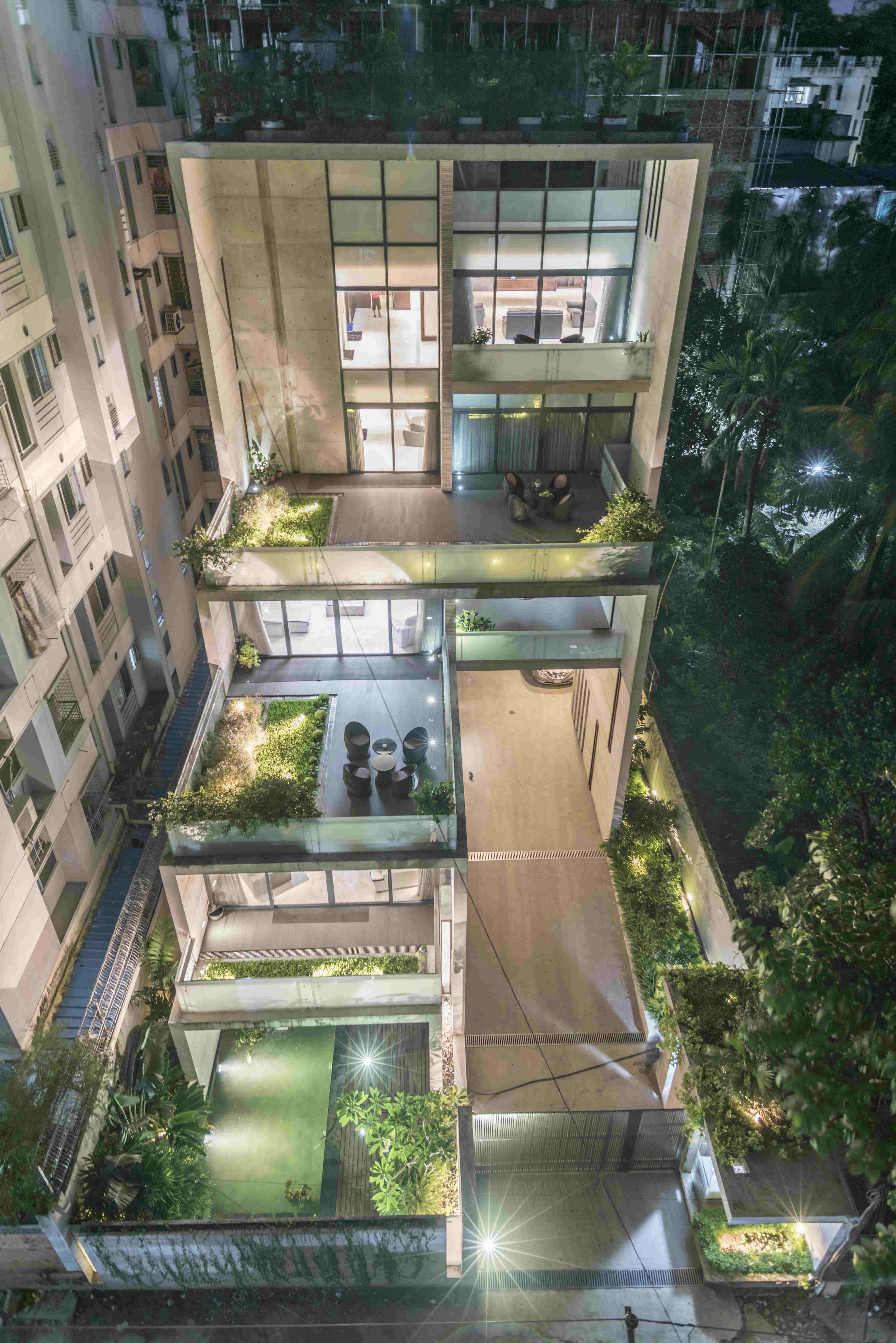

Q. Share some of your most significant architectural projects and what makes these projects special to you.
I’ve never been one to judge projects based on their size or scale. I am yet to call a project significant but I am constantly trying to do it and that inspires me. Following the success of the Asparagus project, I had the opportunity to work on a project in England, UK. It was a humbling experience to be recognized and invited to work overseas, inspired by my previous work.
To mention some of the few, Asparagus was designed as the first ever theatre restaurant in Bangladesh where fine dining combined with live theatre performances was quite a new experience for the food lovers of the city.

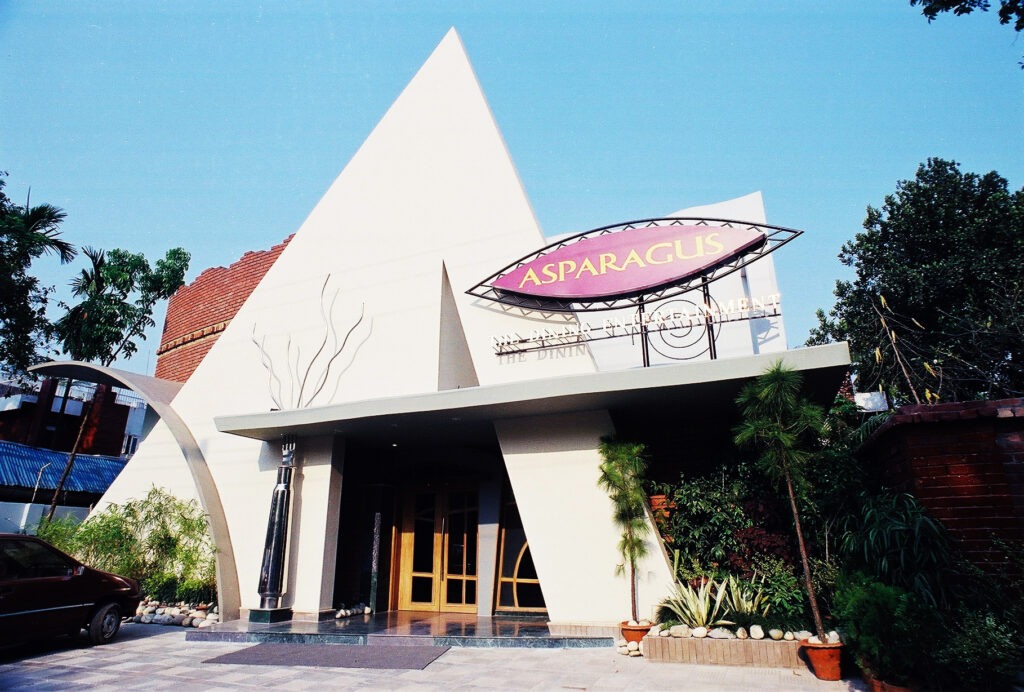

One of my eccentric creations was the VOOT restaurant. Although small in scale, the concept made a distinctive impression. It aimed to evoke a sense of wonder among restaurant patrons to entertain them. The idea stemmed from the psychological perspective that waitstaff, while serving food, witness it but cannot partake in it. Thus, a novel dining experience that incorporated elements of wonder and surprise, was a departure from the norm.

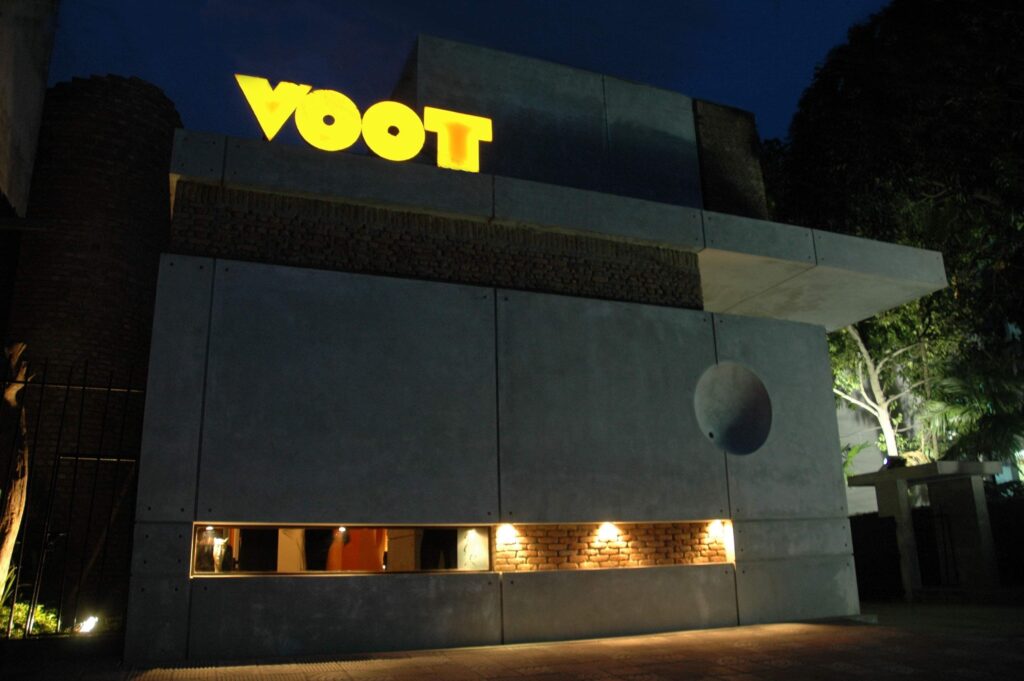

My work took me to the UK, where I had the opportunity to collaborate with British day laborers. I introduced them to the craftsmanship of Bangladesh’s skilled woodworkers, which was both enlightening and enjoyable. After that, my focus shifted more towards connecting residential projects with unique stories of the users that would be precious memories for them and their future generations. Then it came to me that “Form follows fiction.” The residences were meant to be architecture with conceptual statements such as FERA (related to the anxiety of returning home) and CHAABI (meaning “where one looks for the unknown”). These homes are designed around the narratives and unique experiences of the families residing in them.

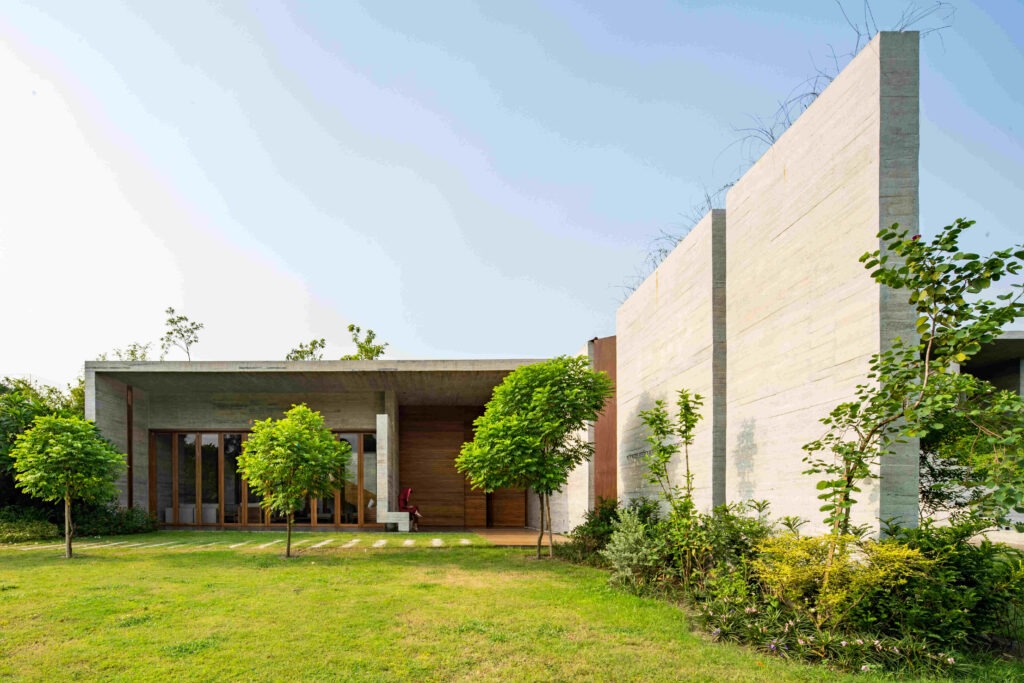

In 2014, a significant turning point occurred with the NINAKABBO project in Tejgaon, a commercial building featuring the works of 12 poets. An Indian businessman noticed my writing and his curiosity led him to seek me out, and we embarked on an office project and then some few others in India. Subsequently, we then started working on an architecture project in Mumbai and that process led to some others. It was later nominated for Aga Khan Awards and also won the Berger Award of Excellence in Architecture.
Additionally, I worked on projects for British American Tobacco Headquarter awarded with the AYA JK cement Architect of the Year award in 2005. Later, embarked on the ambitious endeavor of designing township development projects, along with educational institutions, hospitals, stores, and more. We aim to inspire others through our work and continually seek new avenues for creative expression, such as the NARI poem featured in Joyeeta Tower at 27 Dhanmondi.
Q. Tell us about where you draw inspiration for your architectural designs and are there architectural movements that have influenced your work?
My journey has been a continuous evolution. Starting from my transition from graphic design, interior design to art galleries and then to event architecture, I constantly tried to push creative boundaries. Event architecture involved designing spaces for food fairs, and my venture into restaurant design with Asparagus was a multifaceted endeavor. It involved not only interior and architectural design but also encompassed roles as a costume designer, scriptwriter, and director. This fusion of creative disciplines offered a unique and engaging dining experience akin to a theatrical performance.
Q. Share how your venture into filmmaking compliments your work as an architect, and what motivated you to explore this field?
An important aspect of creative practitioners is their ethical strength, which is demonstrated by their commitment to responsibilities to the country and its culture. As I believe in form follows fiction, I delved into creating a statement of connecting architecture with our culture. 50 years isn’t enough for developing a country’s culture. But if we interlink our history, culture and architecture with one another, we might be able to curious people’s minds and influence them. Since the memory of 1971 made a great impression on me, I wanted to fuel it with fiction to make a statement with that. So, I thought the process of film making and architecture are aligned like that.

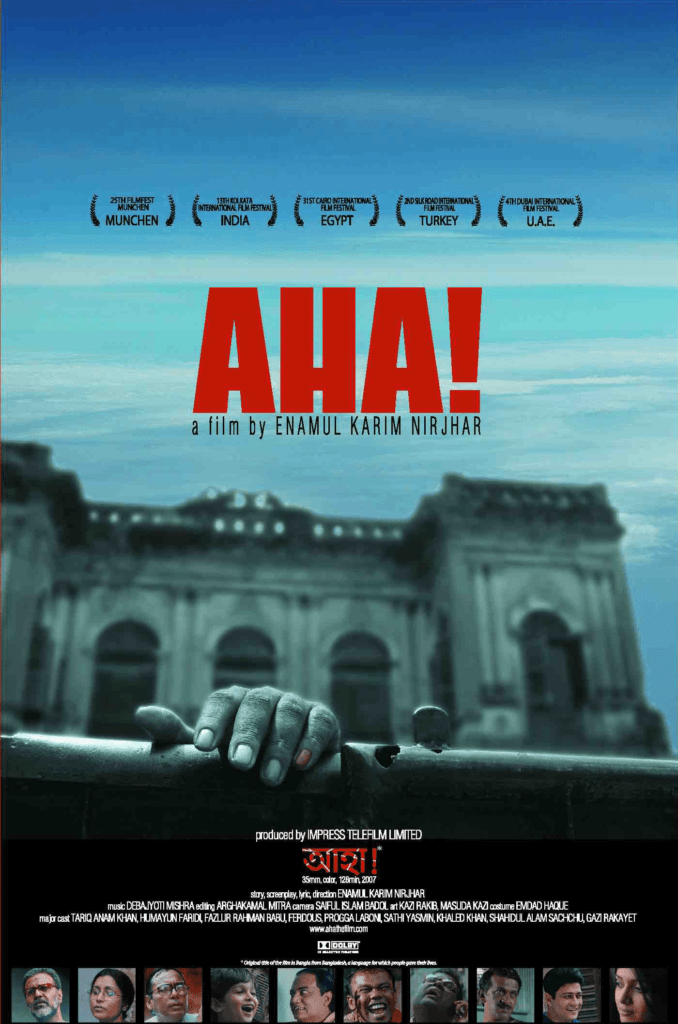

Things that can’t be expressed through architecture, I expressed through my films. For some of my architectural projects I did a film on it after completion. So, correlation of architecture and film is a celebration in itself.
In our country, creative practitioners often go unnoticed until they achieve significant success. I was motivated to change this perception and emphasize the importance of the creative process itself.
Q. Shed some light into some of the social or community initiatives you have been involved in through your architectural projects, and why do you find it important to give back to society?
Creative individuals possess natural talents, and I am passionate about inspiring and nurturing these talents. My main profession is architecture and others are my co-professions. I invest my earnings from architecture in those as my contribution to our culture and society without any returns. Instead, I write songs, direct tunes, and encourage collaboration, allowing others to earn from their creative work.

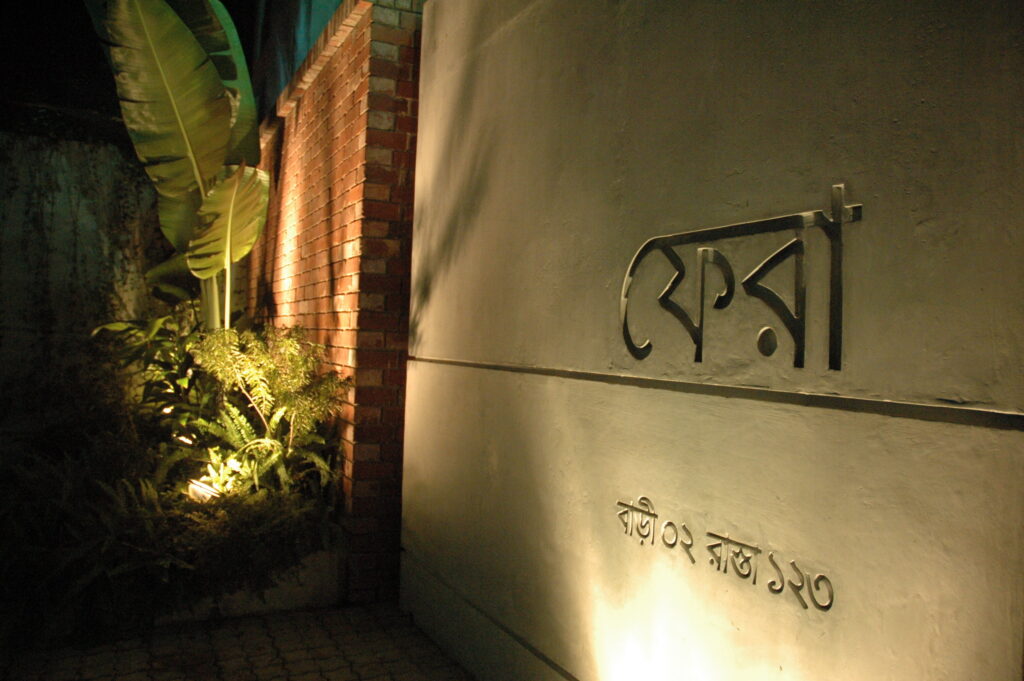

I have visualized my life’s journey as a graph, with the first 15 years focused on learning, followed by giving back starting at age 45. In the years to come, I plan to continue my work in architecture, filmmaking, and various other initiatives. This includes making our hospital in Ashulia to serve all walks of people which would be owned by the people, establishing an educational institution, nursing college, and song company, among other endeavors. These initiatives are designed to be public assets, reducing our reliance on traditional business models and fostering a culture of collective growth and responsibility.
Q. Walk us through your process of prioritizing the needs of end-users in architectural planning and explain how this approach contributes to the success of your projects.
Reflecting on my architectural work, I remember a significant moment when I proposed an idea for the NINAKABBO project. Initially, my client was taken aback by my suggestion to incorporate verses from prominent Bangla poets on different facets of the building. However, when he eventually agreed, it gave the project a new opportunity to celebrate our culture.
It’s about more than just celebration. It’s about making a positive impact. For instance, realizing there were no public seating areas near the building, we proposed an initiative to create spaces for people to enjoy. A water feature was introduced there on the edge inviting the space to people. These enhancements contribute to the well-being of the community and facilitate positive change.
Q. Share your thoughts on the current trends and challenges within the architecture and design industry, and how you adapt to stay at the forefront of this ever-evolving field?
The issue of power dynamics in society can indeed be precarious, particularly when money and influence come into play. In Bangladesh, one prominent challenge lies in the social and cultural sector, which has yet to fully tap into the abundant talent within the population. While the nation is home to many gifted individuals, there remains an untapped potential. Take, for instance, the Boimela, which is a temporary architecture involving the development of an annual competition that brings together young writers, architects, artists, and creative minds to collaborate and compete. The challenge lies in how to engage more people in such endeavors and introduce them more with such temporary architecture practices in our country. Unfortunately, the recognition and support for such initiatives are often lacking in the country.

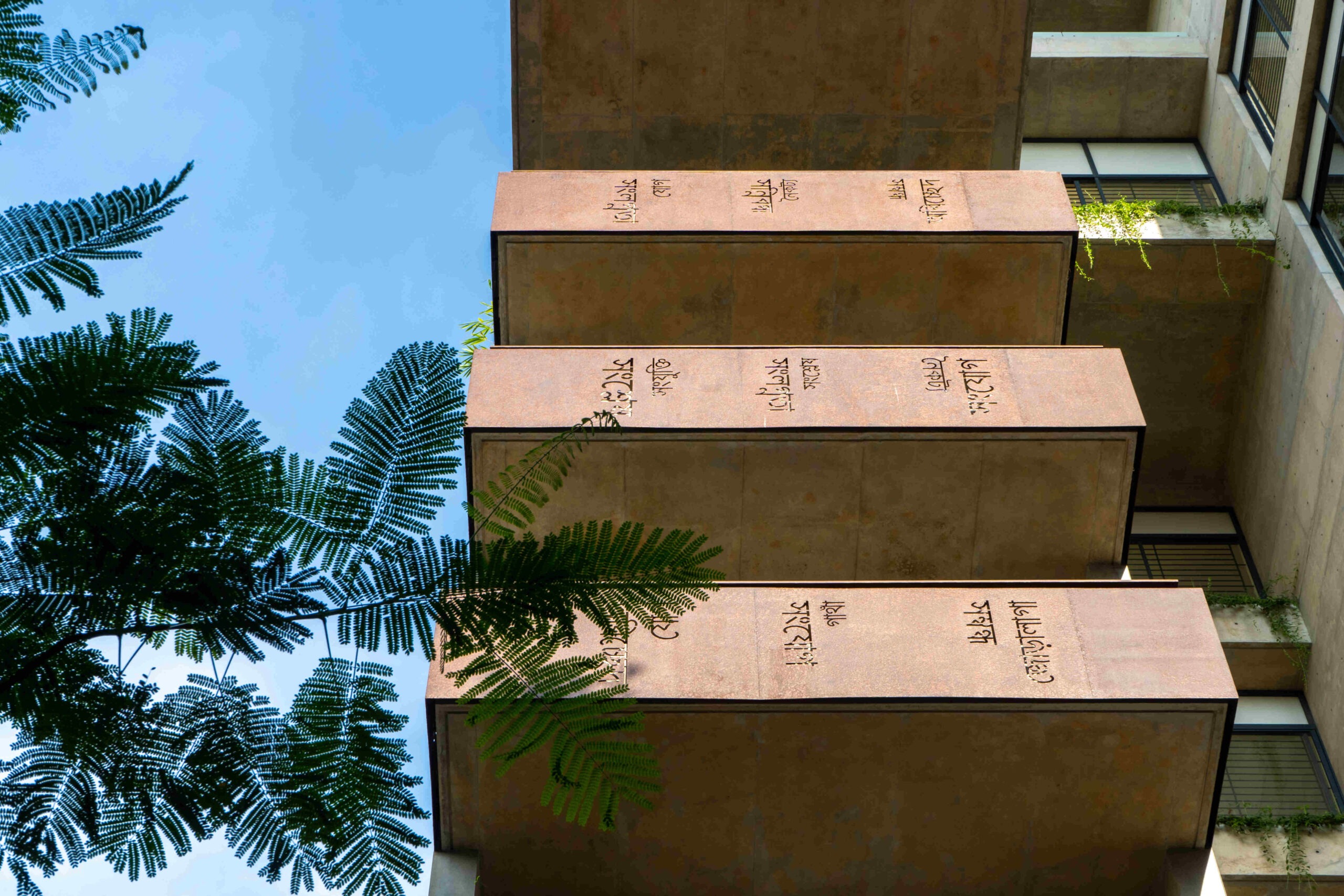

With the vast human resource pool Bangladesh boasts, it is possible to achieve significant progress by fostering a culture of conscientious citizenship, hard work, honesty, and ethical conduct. However, the prevalence of ethical and historical confusion poses a significant obstacle to progress.
To address these issues, it is imperative for leaders and guardians of society to take proactive steps. Bridging the creativity and innovation gap is crucial for the nation’s development. By fostering an environment that values and supports ethical endeavors, Bangladesh can harness its enormous potential and overcome the confusion that currently hampers progress.
Q. Looking ahead, what is your vision for the architecture sector in Bangladesh, and how do you see it evolving in the coming years?
I believe my ultimate dream is to transition from ‘I’ to ‘We.’ I envision a future where I can entrust responsibilities to others who are ethically inclined to carry them forward. Success, to me, will be achieved when I can delegate tasks and watch them be handled with care for the betterment of our collective future.
The vision is to build a process driven organization of creative and other media professionals to build genuine interested groups through a process and try to implement different initiatives with their involvement. We need intuitive architects who would collaborate with AAR (Architecture As Responsibility) and share the same vision with the clients and others. This is to develop socio-cultural impactful useful practices for future generations, which will inspire transparent and honest professional practice for everyone.
My ultimate dream is not only to succeed but to do so in a way that fosters collaboration, positive impact, and a shared sense of responsibility for the future.
Q. What message would you like to share with aspiring young creative people who are considering a career in architecture or related fields in Bangladesh?
During my workshops, I have observed that when young individuals hear my stories and experiences, they are inspired to explore their own creative talents, such as photography or poetry. However, the absence of a dedicated space hinders their potential for growth and collaboration. I envision the creation of a youth center, a concept that is currently lacking in our country. We need a place where young talents can connect, collaborate, and grow. I am seeking support from the government to establish such a youth center which could serve as a model for nurturing creativity and innovation among our youth.

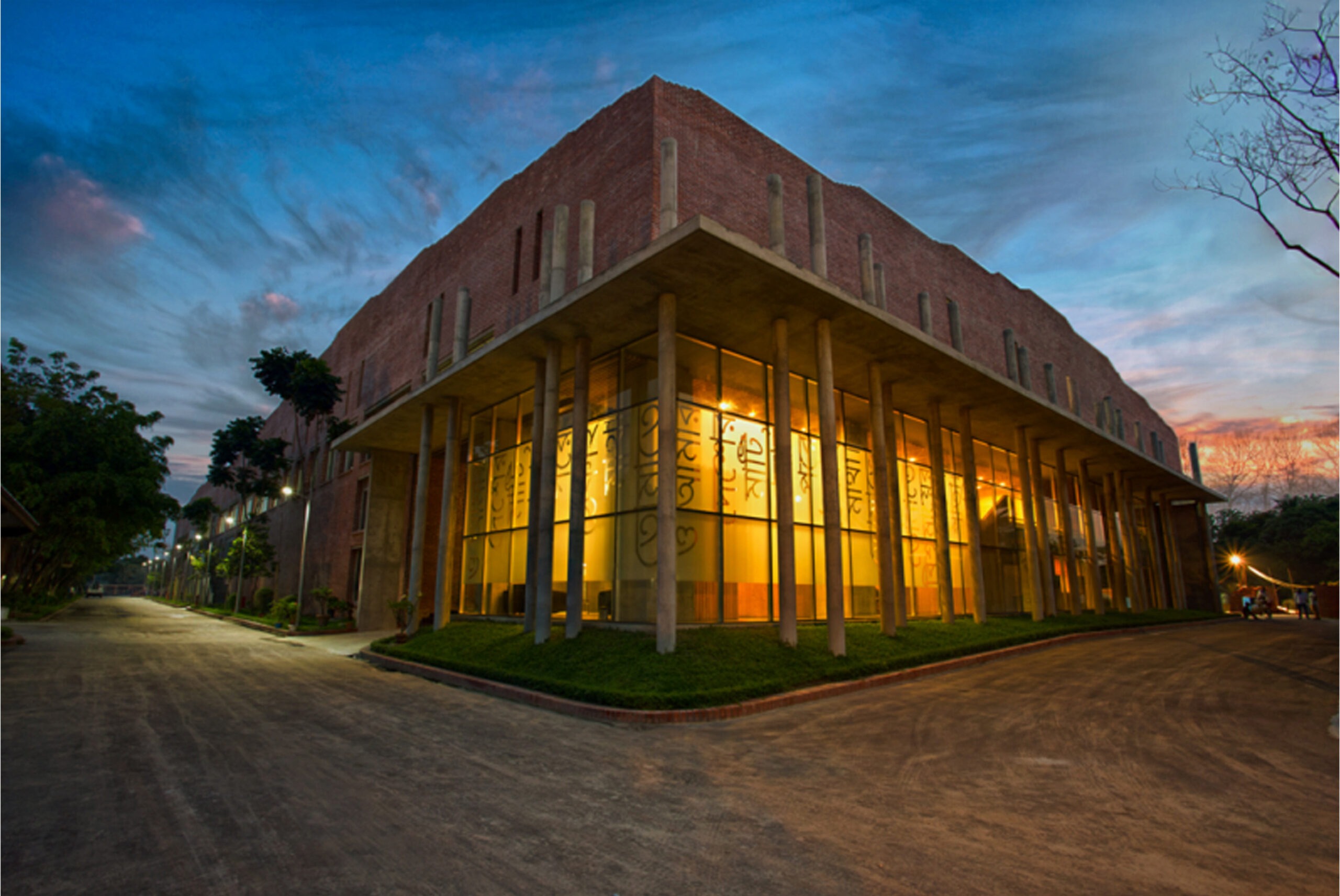

We grow up looking into more projects than processes. But the process of relating the books with society, culture and all the world around us is the main learning of life. Our people, history, and culture is our strength. We have to learn how to channel that strength into our work. So, my message to young individuals is that they should look more deeper into psychology, creativity etc. before going into the profession.
I would like to encourage young people to cultivate a deep love for their country. This love can be a driving force to create numerous opportunities. It’s essential to stay committed and embrace a continuous, long-term approach to progress, focusing on processes rather than short-term, limited projects. By doing so, we can work together to build a brighter future for Bangladesh.
Q. You have made a film named TINI and what was the reason behind it? What was your achievement from this film?
We extremely neglect our history, our ideologies where it should be our strength. As Muzharul Islam is a pioneer architect, I thought if I somehow reach him, other people would get the opportunity to reach him through me. Therefore, it’s more like a communication with him rather than a documentary film. After completing this work, I realized that if I cannot respect my own ideology, I should not continue my profession. I proposed to form a research center at the World Bank building designed by him. I was extremely disappointed when he asked me who would manage it, as no one around him could win his trust by holding his thoughts and beliefs.
Q.How are the clients in Bangladesh?
The clients in Bangladesh are often oblivious about their aspirations. We have to enlighten them and make them perceive the dynamism architecture can bring. When I started my career, they did not know how to use an architect professionally. It’s a process to convince and motivate a client by protecting their thoughts by utilizing the architect’s skill. At the end of the day, it is our responsibility to build a user-friendly architecture. It is our responsibility to give our clients time to cope up with their limitations.
Q. There is a huge trend of real estate in Bangladesh. Your presence in that sector is very low. Why? Do you have an example regarding this? And what’s the take of your institution about it?
If I look back at the apartment culture of the last 20-25 years, I would see how our society has been harmed by allocating 50-60 units of the same size in the same building, maybe with a little community and some parking spaces. But no one thought about the community space or social gathering space where they can exchange their thoughts. The main intention of this practice is just to make profit, not to connect people.

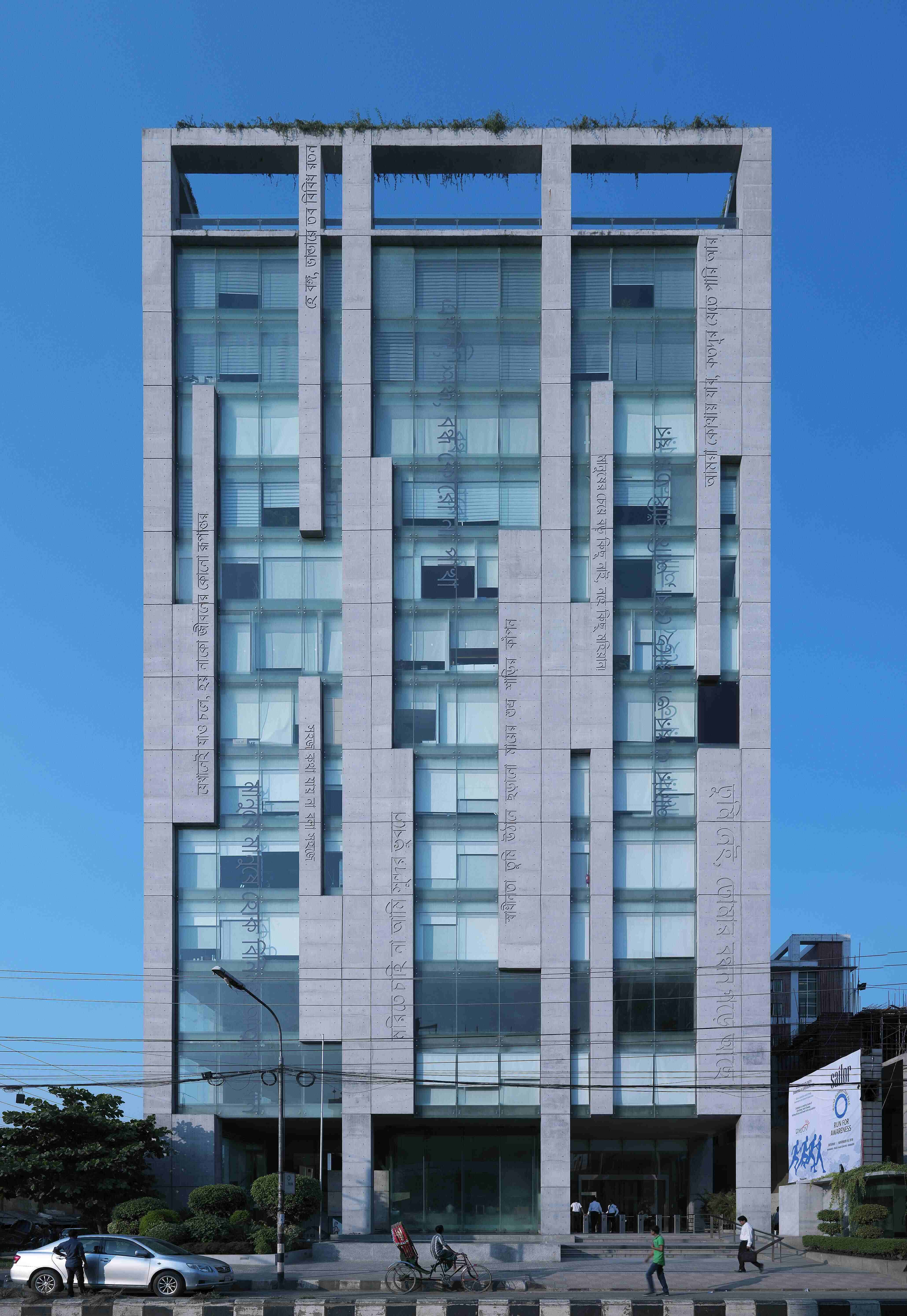

Take, for instance, the home I designed for myself. I envisioned a space where people from all walks of life could reside harmoniously. In this building, we have apartments of various sizes to accommodate diverse needs, and we’ve even considered sensitive matters like providing space for keeping cows during Qurbani. Such considerations go beyond ostentation; they reflect a commitment to inclusivity and cultural sensitivity.
Our institution is taking care of some typical and some particular responsibilities. The main duty is verifying the possibilities and to take the profession in a glorifying position. It is the duty of the institute to guide the fresh architects, organize workshops for their skill development and flourish their knowledge as well as ethical outlook.
Q. How do you align architectural work with the government’s smart Bangladesh, smart city, such initiatives and how we should adapt with technological inventions like AI and such advancement.
It’s truly remarkable how after 1971, we’ve made significant progress in terms of unique developments and splendid homes, but these achievements can ring hollow if there isn’t peace within our households and communities. However, it’s disheartening to witness how, over the course of 50 years of independence, some people have seemingly lost hope.

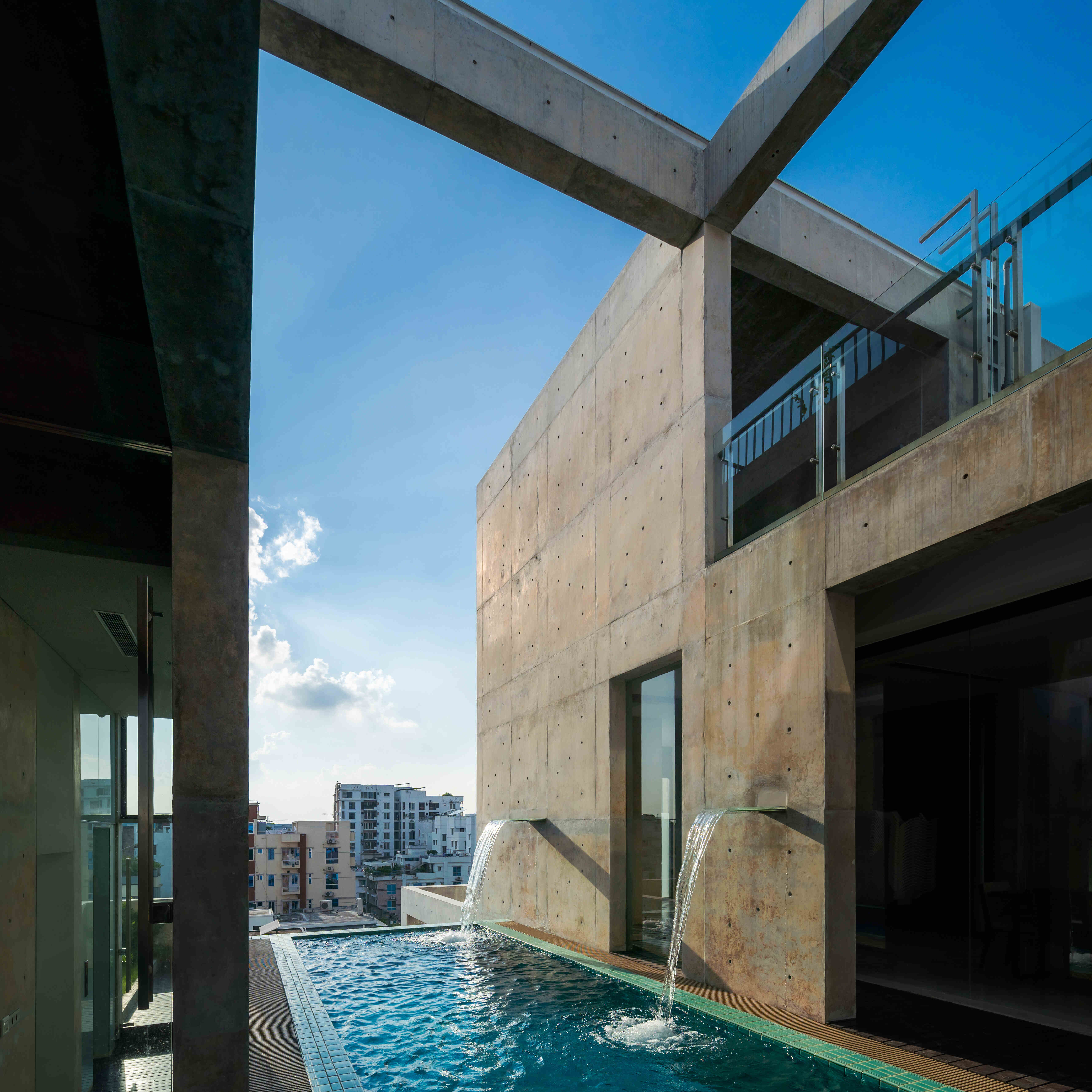

When we talk about creating “smart cities,” it’s important to remember that while money may flow in and grand structures may be erected, the core of any city should be the relationships between its residents. Therefore, it’s imperative for businesses, government entities, and young entrepreneurs to step forward and contribute to the creation of a beautiful and positive society where these values are upheld.
In the end, true success and lasting benefit lie in fostering a culture of cultural inspiration, human camaraderie, and mutual respect, and it’s our collective responsibility to build such a society.
Q. What are you and your organization working towards now?
Our EKNC- Enamul Karim Nirjhar Collaboration includes SYSTEM architects, GAANSHALA, 9 Steps Film, AAR (Architecture As Responsibility), Amader Hospital & Amader Udoyog.
We are working on 360-degree ideas with a single commitment to our motherland, our society. In celebration of 50 years of independence, we are working to create a process of connecting our history, culture and architecture with one another to create curiosity in people’s minds and influence them. By making reciprocal architectural statements and generating innovative ideas, we work towards such an organization where architects, writers, musicians and other creative people work towards one common goal to create a society where we can channel our history, culture into our work.
